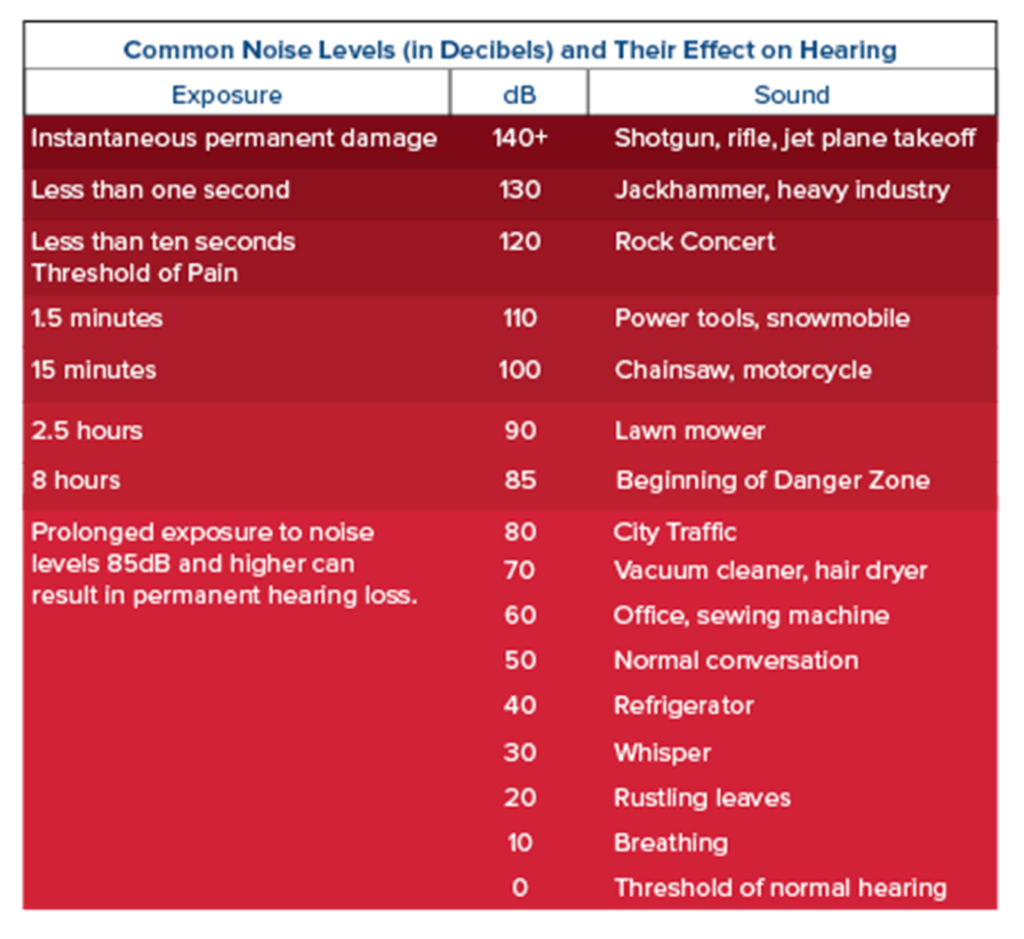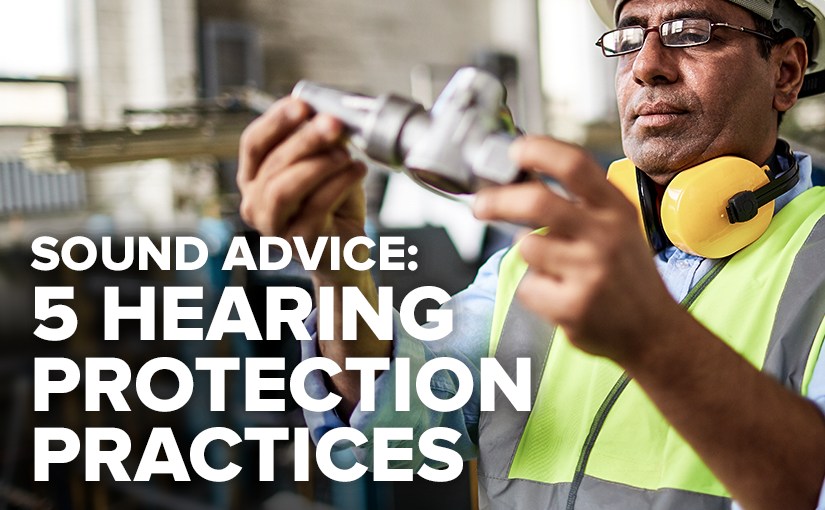The National Institute for Occupational Safety and Health estimates that about 22 million US employees are exposed to hazardous noise levels at work, making occupational hearing loss one of the most common work-related injuries in the country. With OSHA’s recommended “danger zone” starting at just 85 decibels, chances are that your industrial or construction workplace requires the use of hearing protection.
 Source: Chevy Chase ENT
Source: Chevy Chase ENT
1. Choose the Right Noise Reduction Rating
Having the gear doesn’t help if it isn’t the right quality. If crew members are using earplugs that don’t have the right noise reduction rating (NRR), hearing damage could still occur. Even though most hearing protection products come with a NRR on the packaging, you will still need to ensure your earplugs have the correct rating for the environment. If you’re not sure where to start, the CDC published a helpful guide to calculate and use the correct NRR for your work environment.
2. Keep Communication Lines Open
Protecting your hearing is good, but being able to communicate while working with proper protection in place can be challenging. To ensure clear lines of communication, despite the use of hearing protection, you might consider developing hand signals to help your employees get the message across. Another option is designating a place to step away from the noise and remove hearing protection safely. Digital earmuffs with radio capabilities are also a safe bet. These “walkie-talkie” earmuffs allow communication to continue without having to shut down machinery or move away from the work area.
3. Get Tested
OSHA standard 1910.95 requires employers to provide workers with annual hearing tests. While having an audiometric testing program is mandatory, the benefits of tracking employees’ hearing are worth the expense. Together, the baseline test and the annual test results allow employers to see if their hearing conservation efforts are working. If hearing loss is detected, employers can take follow-up measures to prevent further damage. For additional employer responsibilities, see OSHA’s hearing conservation guide.
4. Know When to Wear
As the old adage goes, knowing is half the battle. Educating employees about hearing protection and when it is necessary is the best way to strengthen your safety culture. Some key points to communicate include when and where to wear hearing protection, which protection to use in different situations, and the lasting damage that results from failing to use the proper protection.
5. Replace When Ready
Worn-out equipment should be thrown away. Following the manufacturer’s care instructions helps to keep the hearing protection working at their best. You’ll know that it’s time to replace earmuffs when the headband is no longer able to keep the muffs snugly against the head. To get the full benefit of the equipment, conduct regular inspections, checking that the earplugs and muffs are still flexible and safe to use.
Stock Up on Gear that Protects the Ears
At US Standard Products’ core, we believe in keeping workers across all industries safe from the dangers of the job, and do so by providing the highest quality operational and safety products. To stay up-to-date on the latest workplace safety news and trends, follow US Standard Products on social media:

